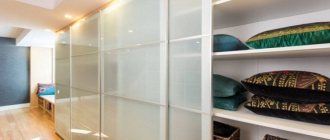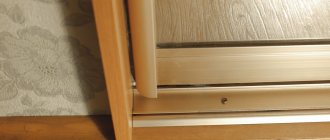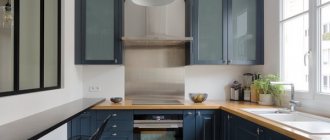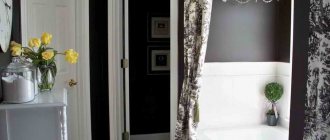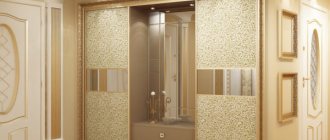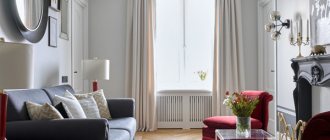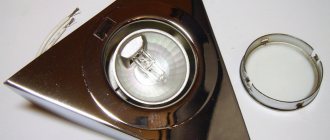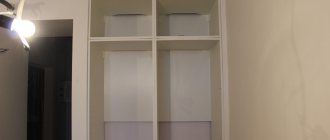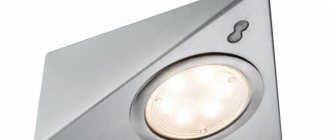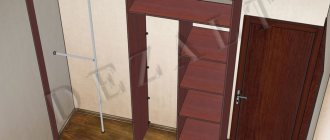Control cabinets (CC) and automation cabinets (CA) are low-voltage complete devices designed for collecting and processing information from sensors, controlling electrical equipment, and transmitting data to the information network of the dispatch system.
produces control and automation cabinets SHU that meet the requirements of TR TS 004/2011 and TU “Automation and control cabinets for technological equipment ACU”.
Control cabinets (CC) and automation cabinets (CA) can be manufactured according to our own circuit diagrams or diagrams received from the customer. If the electrical circuits are provided by the customer, they undergo a thorough audit for operability and compliance with regulatory documents (PUE, industry GOSTs and SNIPs).
Manufactured control and automation cabinets are being implemented at various enterprises in the fields of energy, industry, construction, mining and transportation of minerals, petrochemicals, and housing and communal services. The equipment has certificates of compliance with technical regulations on fire safety requirements and the safety of low-voltage equipment.
The choice of ШУ and ША brand and custom code depends on the number of controlled and adjustable parameters, the complexity of the technological process, the types of actuators, the need to transfer data to upper-level systems and other requirements of the customer’s technical specifications.
Types of equipment offered
On the page “production of automation and control cabinets and panels” process control cabinets and automation panels are presented:
- distributed control system DCS;
- technological processes;
- ESD emergency protection;
- pumping stations and pumps;
- dispatch systems;
- energy accounting ASTUE, ASKUE;
- gas control;
- ventilation systems, heating points, air pressurization and smoke removal fans;
- fire pumps, valves, channels;
- power supply and lighting systems;
- telecommunications;
- cross cabinets;
- server;
- Main switchboard, RP, AVR, ASU.
You can purchase a standard SHU control cabinet with a standard configuration, according to the completed questionnaire, or a non-standard one according to individual requirements.
ACU series cabinets are made from European components and are of high quality.
Together with the control and automation cabinet (CA), each buyer receives a set of documents for the product, where the attached passport reflects electrical diagrams, warranty obligations, and instructions for use.
Design Features
SHU cabinets differ in that they include power circuits and control circuits. Control cabinet diagrams include the following elements:
- Power supplies;
- controllers, input and output modules for discrete and analog signals;
- circuit breakers;
- network communication modules;
- touch panels (optional);
- contactors;
- electromagnetic relays;
- two and three position switches;
- buttons;
- indicator lamps;
- terminals.
Functions performed
The operating principle of control cabinets (control panels) is based on:
- constant monitoring of changes in the technical characteristics of the system recorded by sensors;
- mathematical processing of the received data by software installed in the controller;
- generating control signals to turn equipment on and off (pumps, compressors, valves, etc.) and setting their operating modes;
- implementation of visual monitoring of the state of technological processes.
The main functions of SHU control cabinets and ShU automation cabinets include:
- equipment diagnostics and protection;
- automatic equipment control;
- switching between manual, semi-automatic or automatic operating mode;
- implementation of dispatcher and operator commands;
- precise adjustment of technical parameters of engineering systems or technical processes (temperature, pressure, etc.);
- transmission of telemetric data to the operator panel or operator monitors in the control room;
- visual and remote monitoring of changes in the values of monitored parameters;
- light and sound alarm (working, warning, information, emergency);
- automatic protection in case of an accident;
- blocking the switching on of equipment in the event of a repetition of the emergency.
How to choose an edge for wardrobe parts and shelves
If you decide to make a wardrobe with your own hands, then you will have to deal with choosing an edge and determining the sides of the parts that need to be covered with an edge.
It happens when you can’t find an edge that matches the color perfectly. Then you have to choose something contrasting or matching in shade with the front fittings, profile, design of handles, lamps, mirrors of other furniture. It all depends on the overall design of the wardrobe and interior decoration as a whole.
Recommendations for choosing an edge and determining the sides for seaming:
- For different parts, different edge thicknesses and different types can be selected. For example, internal partitions and shelves can be covered with melamine edge or PVC 0.4 mm thick. The fronts of drawers are usually edged with PVC 1-2 mm thick. The visible ends of the sidewalls, bottom and visor can also be covered with PVC 1-2 mm thick or an overlay profile can be used.
- The sides of the wardrobe parts that will be adjacent to the front surfaces of other parts do not need to be glued with an edge. The same as the ends, which will be covered with a back wall made of fiberboard. If the cabinet is built-in and does not have a back wall, then it is better to process the ends adjacent to the walls, at least by gluing a melamine edge.
- Removable shelves must be pasted over the front edge. If you decide to edge them around the perimeter, then be sure to take into account the thickness of the edge. Even under the melamine edge, it is better to subtract 1-2mm from the width of the removable shelf so that it fits freely into the designated niche.
Advantages of cooperation with us
Cooperation with will provide you with the following benefits:
- guarantee of the quality of goods and services;
- highly qualified specialists;
- efficiency of order execution;
- affordable prices from the manufacturer;
- expert technical support during project development;
- drawing up individual control schemes or providing standard solutions;
- technical support during commissioning.
The cost of a wall-mounted control cabinet will be based on the number of control and monitoring signals and the level of development of functions. You can find out exact prices from specialists by phone or email by sending a request: .
Types of door designs for kitchen units ↑
Most often, sets are equipped with hinged doors, but there are other, no less convenient, designs: folding, folding, sliding, vestibule. Often two or three types of products are combined in one set. They can be made from the same or different materials.
Facades made of combined materials
Option 1: swing ↑
The most popular type of doors for kitchen units is hinged. They are comfortable, functional, and look beautiful. However, many consider them obsolete due to their insufficiently ergonomic design. When opened, they take up a lot of space and can interfere with the owner.
Plastic doors: traditional and radius
On the other hand, this is the cheapest option for decorating facades, and their repair or replacement will not hit the family budget. The installation of such products does not require expensive fittings; they are easy to adjust if they sag.
Since the cost of the facades is a decent portion of the total price of the set, and they can be made from almost any material, hinged doors are perfect for creating inexpensive and aesthetically pleasing kitchen furnishings.
Hinged facades made of MDF
Option 2: folding ↑
When arranging the top row of cabinets, you can install lifting doors for the kitchen unit. This is convenient if you need to place items or products that are often needed when preparing food on the cabinet shelf. Such parts are equipped with hydraulic mechanisms. They lift and hold the door open. The owner does not have to make any special efforts.
There are several types of lifting mechanisms that are used in such structures:
Glass hinged doors
- Gas shock absorbers. These are the most popular lifting mechanisms. They are convenient and relatively inexpensive. But there are also disadvantages: after installing the door, you can no longer change the angle of its rise, but it opens to the highest position. If the cabinet is located high, this may create inconvenience when closing. Doors equipped with gas shock absorbers do not lower smoothly enough.
Gas shock absorber installation diagram
- Rotary lifts. These are convenient mechanisms that can be installed on facades of any weight and size. The advantages include smooth closing of even very heavy doors. They can be opened at a convenient angle. This requires minimal human effort. If the doors are equipped with the TIP-ON system, then they open by simply pressing the structure. The downside is the high price. Such mechanisms cost 5-10 times more than gas ones.
- Elevator mechanisms. A door equipped with such a mechanism can rise vertically or rotate. Such lifts are very convenient, they operate silently and smoothly, and the handle rises low, which makes closing the facade easier. If the budget allows, the mechanism can be improved by installing an electromechanical drive. The disadvantage is the high cost. A set with such doors will be extremely functional, but very expensive.
Option 3: folding ↑
This is a type of lifting doors for kitchen units. When opened, they fold, making it easy to open the wall cabinet, even if it is located very high. The handle is relatively low and the door is just as easy to close. Folding doors are most often installed on cabinets with a dish drainer.
Advice. If there is a financial opportunity, it is better to equip lifting mechanisms with electromechanical drives or push opening systems. This is an ideal option for a beautiful and ergonomic “smart” kitchen.
How folding doors work
Comprehensive process automation service
Our company provides services for the design and implementation of automated, low-current and electrical systems.
The full cycle of technological operations includes the following processes:
- development of technical specifications;
- development of design and working documentation;
- support during the technical examination of the project;
- production of control cabinets (CC) and automation cabinets (CA);
- development of application software (ASW) for controllers (PLC) and automated workstations (HMI);
- installation and commissioning of equipment by experienced specialists;
- maintenance of systems, provision of advice on any issues.
Over a long period of activity, our specialists have completed technically complex turnkey automation projects: from the formation of technical specifications and design to the commissioning of the system. In the process of work, the current standards of PUE, GOST, SNiP in the field of electrical engineering and automation systems are observed. Control cabinets (CC) and automation cabinets (CA) meet fire and explosion safety standards, PUE standards and undergo factory testing and final inspection.
Sliding door opening systems
A fundamentally different way of installing facades on furniture bodies. The doors are not attached to the body in any way, but slide along guides installed on the body. In this case, the sash itself can simply be moved to the side or folded. Or wound on the shaft.
Sliding doors
Sliding opening systems operate on the “compartment” principle; the door slides along guides to the left or right. Their disadvantage is that in the end we get limited access to the internal filling of the cabinet - exactly the width of one door.
There are two types of sliding systems – suspended and supported. The latter are also called roller.
Accordion doors
Their advantage over compartment doors is that we get full access to the interior of the cabinet. But this requires space in the front of the cabinet to fold the doors forward. But the compartment doors move in the same plane.
Furniture blinds and roller shutters
They are used in furnishing furniture much less than they deserve. The reason is that to install them, you need to allocate space inside the cabinet for the shaft on which the facade will be “screwed”. This is not always acceptable, especially in kitchens where every shelf is important.
Electric blinds are a new opening mechanism for kitchen cabinets. It looks very impressive and works without a shaft. But, like all mechanisms powered by an electric drive, it is not cheap.
Step-by-step mounting instructions
Let's consider the installation of the most common hanging system based on the lower profile for sliding wardrobes.
The loss of running carriages is prevented due to the strong fixation of the array in the doorway and the shape of the profile.
Sequence of actions when attaching:
- install the upper fittings (guide profile). When fastening there should be no gap between the ends of the profile and the side walls. For fixation, you can use screws with countersunk heads or self-tapping screws;
- adjust the movement of the roller;
- install the lower guide profile;
- install the door travel limiter corner.
The suspension system allows each door to withstand loads of up to one hundred kilograms.
